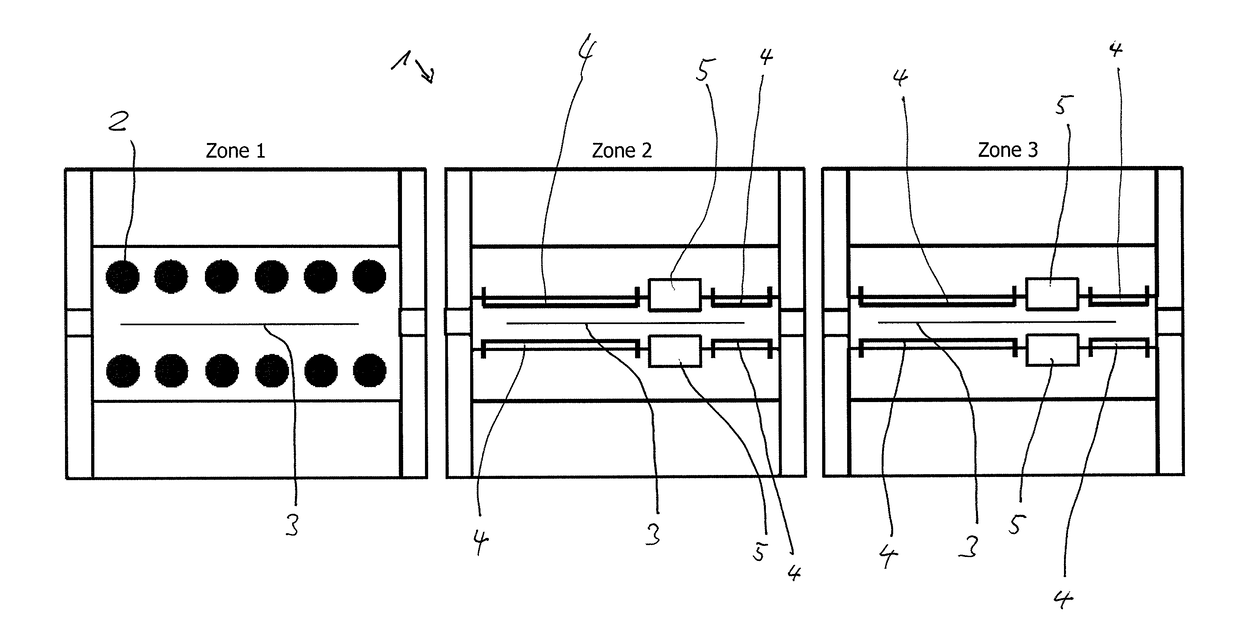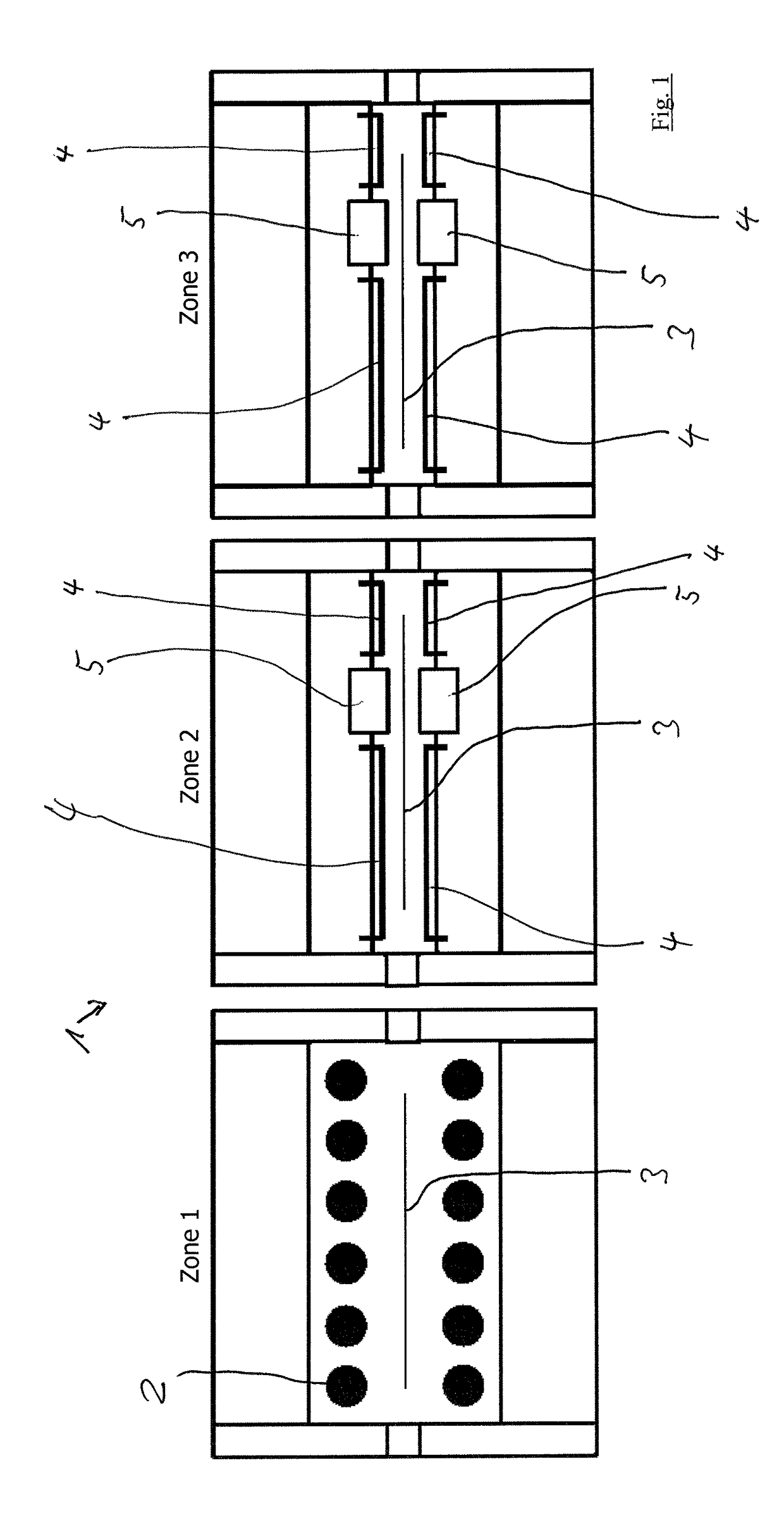Method for heating steel sheets and device for carrying out the method
a technology of heating steel sheets and steel sheets, which is applied in the direction of heat treatment equipment, lighting and heating equipment, furnaces, etc., can solve the problems of difficult coordination of loading and unloading, difficult to achieve the effect of low transition resistan
- Summary
- Abstract
- Description
- Claims
- Application Information
AI Technical Summary
Benefits of technology
Problems solved by technology
Method used
Image
Examples
Embodiment Construction
[0083]The device 1 according to the invention is a heating device, which makes it possible to heat sheets and maintain their temperature in three different zones. In this case, the zones can be produced in a furnace that structurally forum a single unit, but it is also possible for the zones to be positioned structurally separate from one another. The transport from the zones to one another or into zone 1 or out of zone 3—is usually carried out with blank supports, which are inserted into the respective zones with grippers tar are transported within the zones with intrinsically known drives.
[0084]Regardless of whether the blank supports are inserted or driven, a cyclical advancing that is adapted to the press cycle is preferable.
[0085]Zone 1 is a preheating zone with rapid heating; in the preheating zone, jacketed radiant tubes 2 (or open flames) act on the blank 3. The zone temperature in this case is approx. 1,300° C. since such a high zone temperature ensures a rapid heating of t...
PUM
| Property | Measurement | Unit |
|---|---|---|
| temperature | aaaaa | aaaaa |
| temperature | aaaaa | aaaaa |
| temperature | aaaaa | aaaaa |
Abstract
Description
Claims
Application Information
 Login to View More
Login to View More - R&D
- Intellectual Property
- Life Sciences
- Materials
- Tech Scout
- Unparalleled Data Quality
- Higher Quality Content
- 60% Fewer Hallucinations
Browse by: Latest US Patents, China's latest patents, Technical Efficacy Thesaurus, Application Domain, Technology Topic, Popular Technical Reports.
© 2025 PatSnap. All rights reserved.Legal|Privacy policy|Modern Slavery Act Transparency Statement|Sitemap|About US| Contact US: help@patsnap.com


